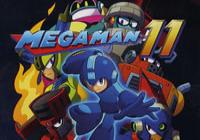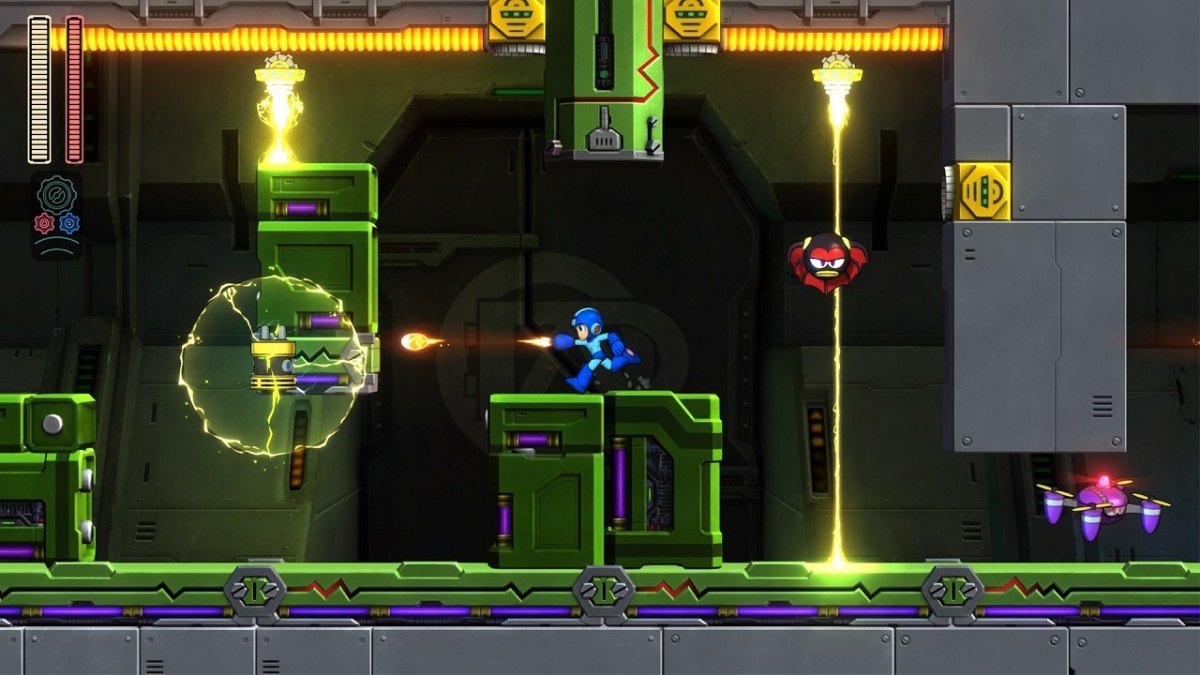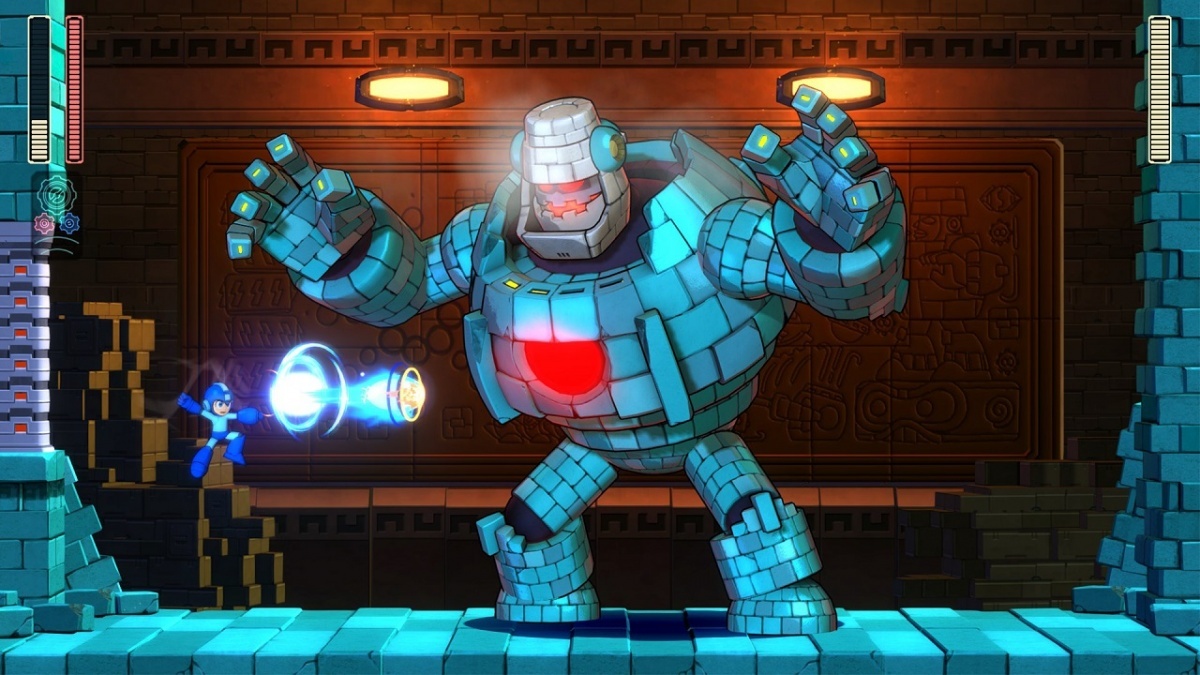Mega Man 11 (Nintendo Switch) Review
By Renan Fontes  04.10.2018
04.10.2018

The past decade has not been particularly kind to Mega Man. The series saw mass cancellations across the board in 2010, the man most involved with the franchise left Capcom, and the Blue Bomber faded into relative obscurity with nothing to show for himself other than a few compilation releases. Interestingly, and almost bizarrely, it's these very compilations that ultimately saved Mega Man, selling enough to renew Capcom's interest in the franchise and develop an eleventh entry for the long running platformer.
Although strong games in their own right, the previous two entries in the Mega Man series relied more on reminding audiences why they loved the Blue Bomber than providing the next step for the franchise in a post-Mega Man 8 world. Both Mega Man 9 and Mega Man 10 styled themselves after the NES-era titles with level design more in-line with the series' first six instalments instead of that of the later entries. The former generally succeeded with far more grace than the latter and the franchise went on what was effectively an indefinite hiatus following the release of 10.
In Capcom announcing Mega Man 11, no fan would be at fault for instantly believing the title would by stylised similarly to the titular Mega Man's last two outings. It's naturally quite a big deal, then, that Capcom not only revealed a modern aesthetic for the platformer, but genuinely new gameplay mechanics to boot. 11 is more than just a re-tread to cash in on nostalgia; it is a genuine effort on Capcom's part to move Mega Man forward as a franchise. When all is said and done, even in the event that the eleventh instalment would result in a weaker game, this is exactly the move Capcom needed to make with the franchise to keep it relevant.

Thankfully, Mega Man 11 is not weak by any means. Rather, it might genuinely be one of the strongest entries in the franchise. It perhaps may not hit the same highest highs the series has seen, but there is a consistency in quality from start to finish that very few entries in the series can actually claim. There is not a single weak link when it comes to level design. Even the more gimmicky stages, such as Bounce Man's, make sure to offer engaging platforming challenges for Mega Man, including altercations to typical jump and shoot formula, without compromising the core gameplay in the same vein as the auto-run stages from previous titles.
The "worst" stages would likely be Wily Castle 3 and Wily Castle 4 as they have very little in the way of platforming challenges, focusing more on boss fights, but the bosses this time around are the most engaging they have ever been, especially the eight Robot Masters. Dr. Wily Numbers 81 through 88 make for a great set of antagonists for Mega Man, each one offering more than enough in versatility when it comes to combat. Block Man has multiple forms; Fuse Man goes into a lightning charged mania halfway through the fight; and Impact Man does everything in his power to deprive Mega Man of suitable dodge spots.
A large reason as to why boss fights stand out all the more prominently is due to the introduction of the Double Gear system. An invention by Dr. Wily in his youth, one that might actually have some lore implications regarding Mega Man X, the Double Gear system, was billed as Mega Man's newest gameplay mechanic, but it isn't exclusive to him. Should Mega Man damage a boss enough, they will trigger their own version of the Double Gear. These shifts effectively act as desperation moves on the boss' part, completely changing the dynamic of the fight and ensuring Mega Man doesn't just spam their weakness in order to kill them in a matter of seconds.

As for Mega Man, his Double Gear allows him to utilise three modes: Speed Gear, Power Gear, and the eponymous Double Gear. The Speed Gear slows down gameplay, allowing Mega Man to blaze by delayed obstacles; the Power Gear increases Mega Man's power, changing the effects of his special weapons, while also amplifying the power of his Mega Buster; and the Double Gear can only be triggered when Mega Man is low on health, mixing the abilities of both Gears together at the expense of forcing an overheat.
When triggering a Gear, Mega Man will have a few seconds before he needs to turn them off otherwise he will overheat. This is a good way of ensuring players don't simply spam the feature and the time allotted to each trigger is exactly what it should be. It's a boost of help, not a way to circumvent gameplay. That said, though, there are purchasable upgrades that do enhance the Double Gear system, either by increasing Mega Man's speed or by simply providing a more forgiving recharge time. Parts in general aren't new to the series, but they make a triumphant return nonetheless with certain Parts needing to be unlocked before they can be bought.
The shop can be used to circumvent certain gameplay challenges, offering E-Tanks at a rather generous price, but the shop is inherently an optional mechanic. Series' veterans don't need to dip into the shop if they don't feel the need to. It's a good option for newcomers and those who want to play around with all of Mega Man's new goodies, but it is no means necessary for completion.

With regards to difficulty, Mega Man 11 is kind enough to offer four modes out the gate: the self explanatory Newcomer; Casual mode for rustier fans; Normal for those looking for an adequate challenge; and Superhero for veterans looking to test their platforming skills. Casual is perhaps too easy, even if designed for out of touch fans, but Normal and Superhero both have reasonable difficulty curves. Superhero, of course, offers an extreme level of challenge, especially when it comes to boss fights, but there is a balance to how hard each stage gets. Difficulty isn't just a matter of nerfing Mega Man while buffing enemies, either. Certain stages play with enemy placement to the point where a playthrough on Normal will be fundamentally different in some instances when compared to Superhero.
The curve does dip downward when entering the Wily stages, but the first eight Robot Masters offer more than enough challenge to allow for a less stressful endgame. It isn't as if the Wily stages are poor, either; Wily Castle 1 and 2, with the former being home to the single hardest boss in the entire game. Interestingly, it seems as though the classic series has fully embraced storytelling, at least to some extent. The plot plays a bigger role here than ever before. At times, 11's script feels more in-line with the earlier X titles than its classic series' brethren. This isn't a fault, however.
Thanks to the expressive new art style, characters really pop on screen, even if, more often than not, they are just expositing dialogue without moving. Characters feel natural on-screen when they speak. Dr. Wily, especially, steals the show when it comes to facial emotion. It certainly helps that the story itself, while relegated to only a few short cut-scenes, is generally well written with a tight script. From its story, to its art style, to its gameplay, Mega Man 11 is everything the series needed to finally push past its retro roots. Mega Man has been ushered into the modern age at last, and he's never looked better.

Cubed3 Rating
Exceptional - Gold Award

Mega Man 11 not only marks a return to form for the franchise, it serves as a natural evolution of Mega Man's foundation, finally allowing the series to progress into the next generation. On an aesthetic and gameplay level, the series has taken some much needed, and welcome, steps. The art style has an appropriate level of charm and polish, while still evoking a more old school aesthetic, while the new Double Gear system pairs wonderfully with the platformer's tight level design. Mega Man 11 is a magnificent blend of old and new, honouring what came before, while never forgetting to look towards the future.

![]() 9/10
9/10
![]() 0
(0 Votes)
0
(0 Votes)
 Out now
Out now  Out now
Out now  Out now
Out now  Out now
Out now Comments
Comments are currently disabled

 Sign In
Sign In Game Details
Game Details Subscribe to this topic
Subscribe to this topic Features
Features





 Top
Top

